UC Blogs
Tough Time for Bees
In February--the afternoon of Feb. 8 to be exact--Extension apiculturist Eric Mussen of the UC Davis Department of Entomology told us that California...
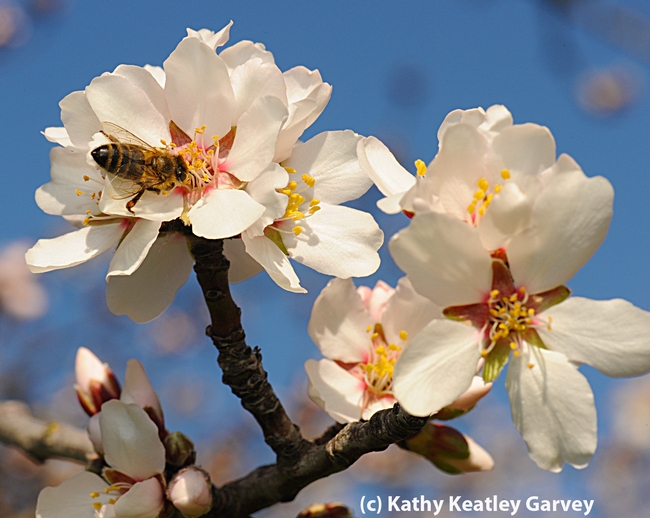
Honey bee foraging on almond blossom. (Photo by Kathy Keatley Garvey)
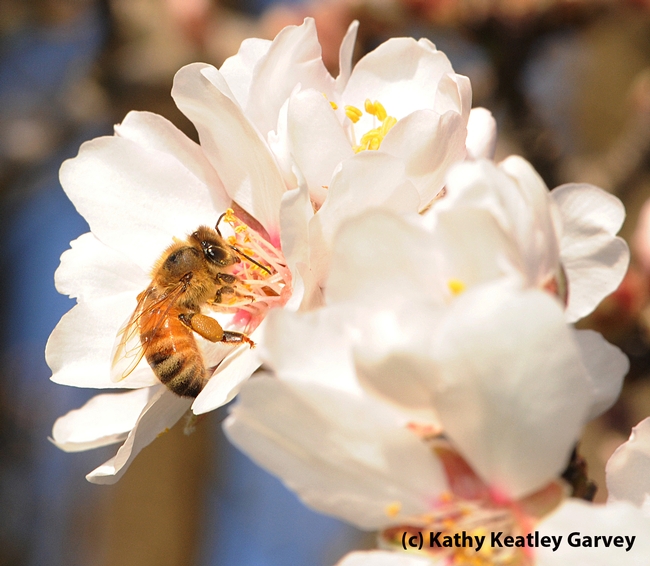
Close-up of honey bee on an almond blossom. (Photo by Kathy Keatley Garvey)
My Favorite Magnolias
Growing up in the SF Bay Area, I’ve never been much of a fan of evergreen magnolias, (usually Magnolia grandiflora), possibly because they are all too common. But the deciduous magnolias, well, that’s a different story. Commonly called Tulip Trees, the blooms seem to pop out of the bare branches of Winter when you least expect it, many beginning in January. There are dozens to choose from, and colors range from white to white/pink to lavender and deep burgundy, and many are scented. And amazingly enough, a new yellow Magnolia has been developed by growers! These Magnolias are very cold hardy, but because early blooms are subject to frost damage, the later blooming varieties are best for the colder areas of the County. You can also put them in a northern exposure location in your yard, which will also delay blooms. Sunset Garden Book divides them into two types: The saucer flowered Tulip Trees with which we are all familiar, and the star flowered ones, usually white and fragrant, such as M. stellata.
Although it is a bit past its peak by now, the SF Arboretum has a stunning collection that will knock your socks off during mid January through March. One of the stars of the show is M. campbellii ‘Darjeeling’, with large deep burgundy blooms. ‘Darjeeling’ was cultivated from a tree growing in the Lloyd Botanic Garden in Darjeeling India. Its ancestors grow in the sheltered valleys of the Himalayas, Nepal, and into southern China. M. campbellii var mollicomata blooms a little later, if late frost is a problem.
The attached photos show one of many varieties of Tulip Trees in our neighborhood in Vallejo in mid-March.
In my research, I ran across a cultivar called M. x soulangeana ‘Black Tulip’, which has spectacular deep burgundy blooms which are 6” across, opened up. This was hybridized in New Zealand by Felix and Mark Jury. I plan to order one from Monrovia Growers through Amazon ($115 for 5 gallon size) or from Mid City Nursery, avoiding a delivery charge. The soulangeana hybrids are widely used in the Bay Area, as well as M. stellata, (star Magnolia) and M. denuda (Yulan Magnolia), both of which are fragrant.
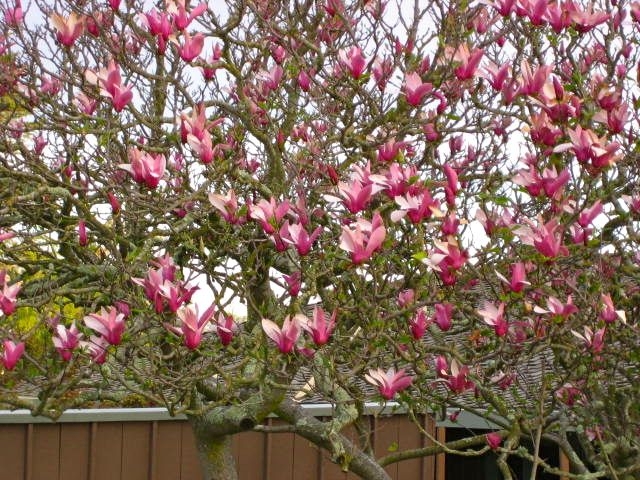
Photos by Bud Veliquette
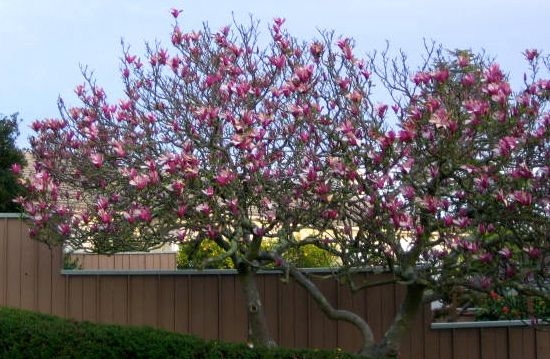
IMG 2627
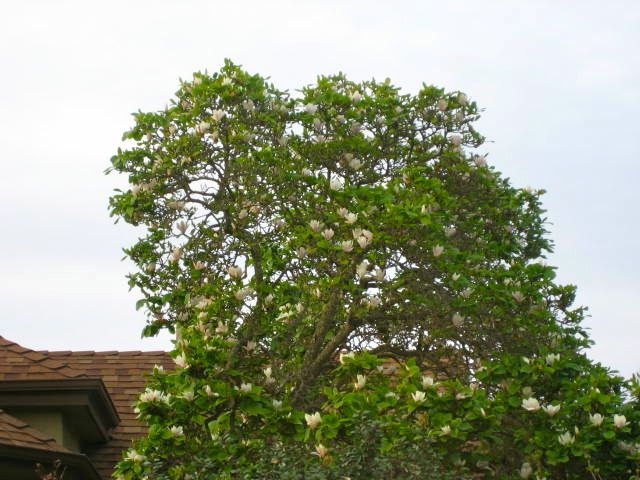
IMG 2620
Perfectly Timed Photos
Insects outnumber us on this earth. And they always will. By the millions. Penny Gullan and and Peter Cranston, emeritus professors of entomology...
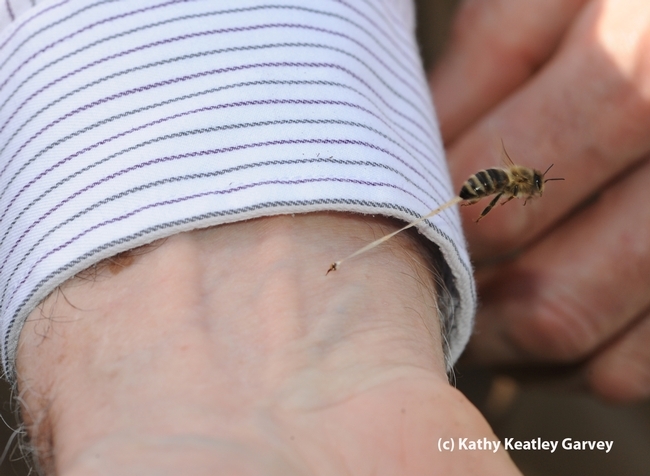
Honey bee stinging Extension apiculturist Eric Mussen. (Photo by Kathy Keatley Garvey)
Decorating For Spring With Flowers
Spring is such a happy time with flowers bursting out all around that I always want to get into the act and replant the large terra cotta pot for my front porch. However, last week as I looked under the laundry room sink and saw the long-abandoned Easter baskets from my daughters' youth, I had a new idea. Why not use those baskets as my planters?
Because my locally-owned nursery seems to be closed, I headed down to a local big-box hardware store with a garden department. I knew I wanted to line the baskets with something that would let water drain, but keep the soil in. My idea was to get sphagnum moss, but I found something even more interesting: a coco fiber liner intended for hanging planters. With that in my basket I headed for the bloom aisles.
Recalling all the beautiful planters I've seen in Sunset Magazine, I wanted something a little taller for the center of each basket with smaller flowers around it. There were lots of good candidates: primroses (Primula), cyclamen, French marigolds (Tagetes patula), pansies (Viola wittrockiana), ranunculus (Ranunculus asiaticus) and Kalanchoes (Kalanchoe Calandiva)--but you could use anything that suits your fancy. Just be sure to choose flowers that have similar requirements in terms of water and light. I happened to choose a couple of the Kalanchoes and lots of pansies, and ended up with 4" pots of Kalanchoe because that's all they had, but you only need buy the 6-pack size. They will fill in beautifully in no time at all.
The coco liner was easy to tear into pieces to fit each basket. Then the plants went in. I added some compost from my backyard pile to a commercial potting mix and filled in around the plants. The finished baskets are so cute on my front porch. With quite a few pansies leftover I saw some very small baskets at the craft store for only 99 cents. Who could resist? So you'll see by the pictures, I now have porch baskets and table baskets and am eager for guests to arrive to enjoy my festive decor. Happy spring!
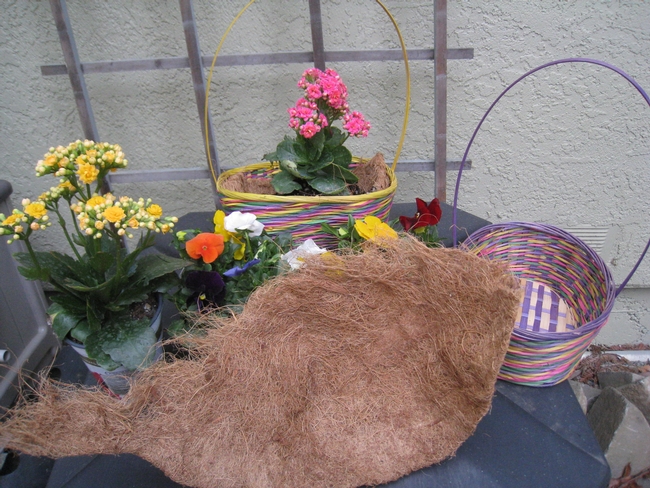
photos by Marian Chmieleski
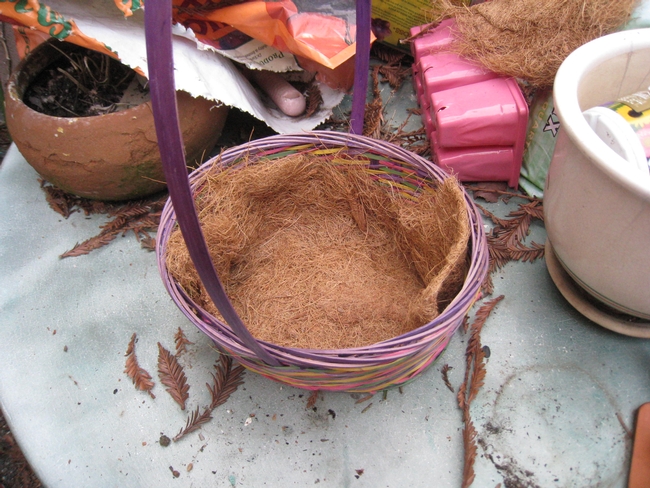
IMG 4312
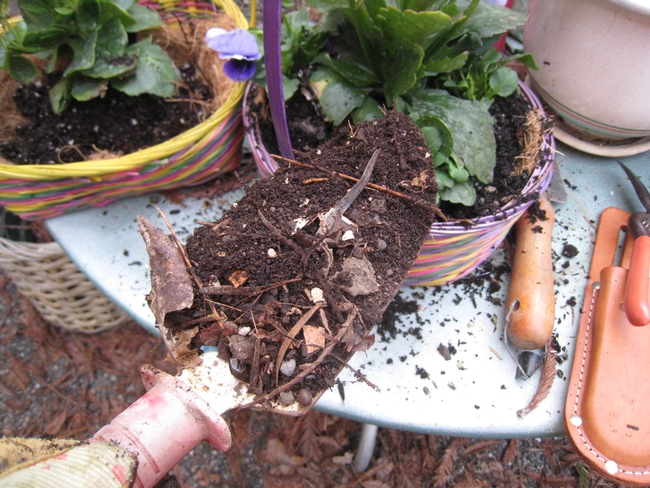
IMG 4313
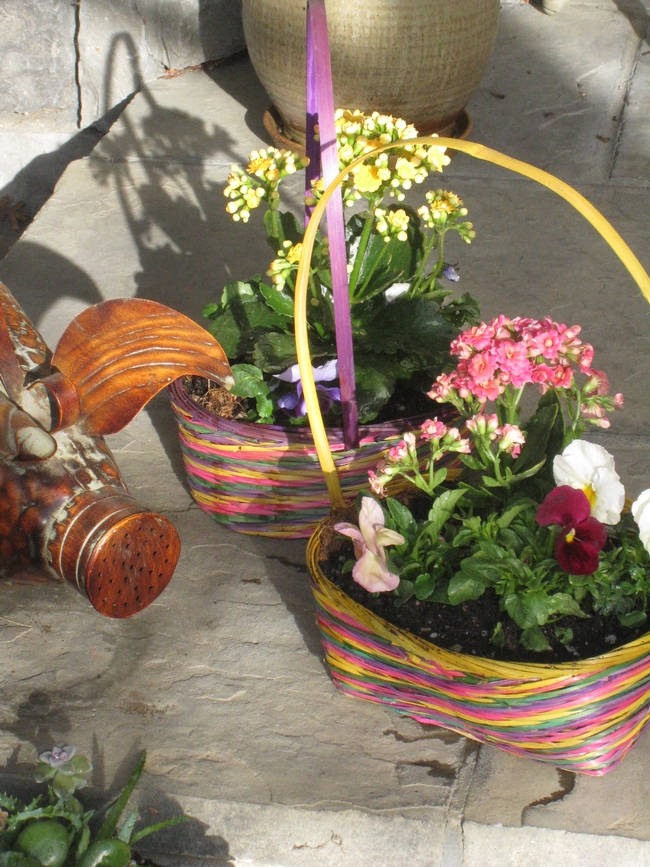
IMG 4317
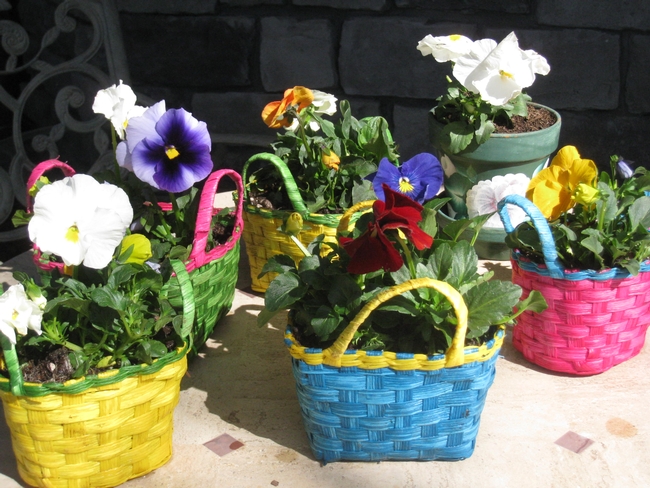
IMG 4326
Honey Bees on Japanese Maple?
Honey bees favor assorted plants, including lavenders, mints, salvias, asters, borage, wild roses, echiums, clover, fireweed, goldenrod and phacelia,...
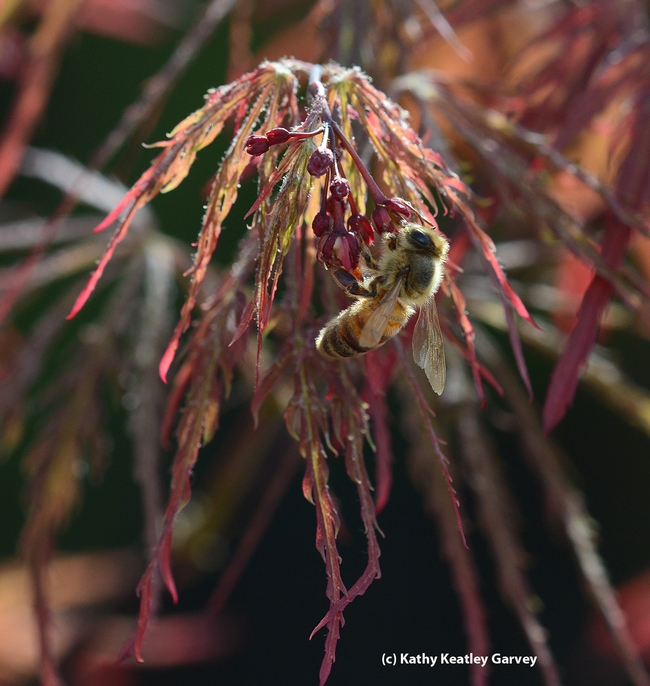
Honey bee foraging on a Japanese maple. (Photo by Kathy Keatley Garvey)
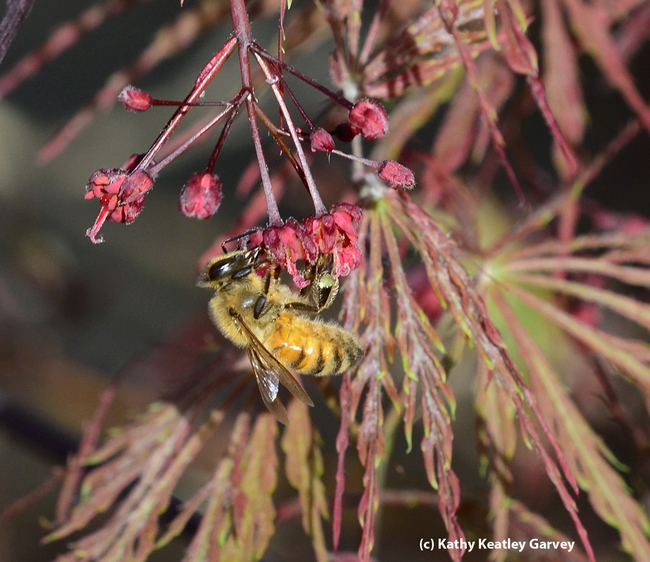
Close-up of honey bee foraging on a Japanese maple. (Photo by Kathy Keatley Garvey)

